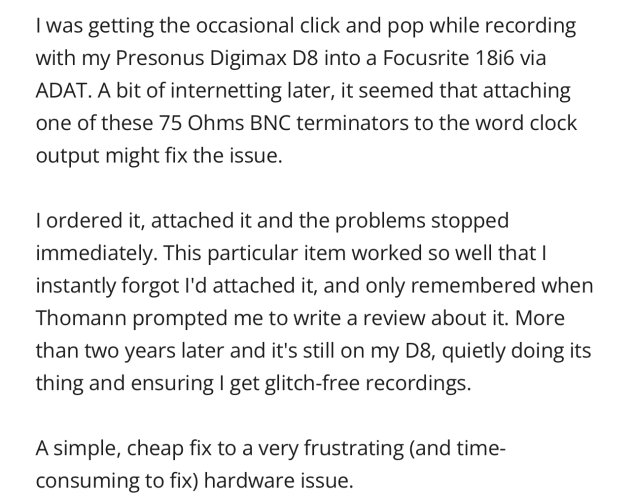It works both ways of course.
Since I seconded the suggestion to use terminating loads instead of just caps, I did not reply as I have little interest to fight pseudo-science or confirmation bias. But for those willing to understand, I will point to this YouTube video:
Signals sent down an unterminated path cause standing waves and so, reflections. This is always so, not just in the case of inductive elements tuning anything. The question is not whether it happens, but whether it’s in fact a problem.
One insightful comment is that buffering on the OCK-2 offers isolation (actually: dampening, not infinite isolation as I don’t think the isolation is optocoupled, is it?) so it is questionable if anyone would notice the difference of a termination load over no termination, or just a cap. But looking at how we are in the extreme dBs here comparing an OCK-1 to an OCK-2, I am sure that any audiophile would take every little extra.
Again, for those who want to understand, take a look at the video which shows what’s happening in exaggeration. Not looking for a quarrel with others — do whatever you want and enjoy the music. Peace!
Funny how a simple suggestion could cause such a ruckus



























